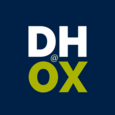Digitally Curating Knowledge Creation: Understanding and Recording the Process of Interpreting Cultural and Historical Artefacts
Principal Investigator / Director: Ségolène Tarte
Oxford participants: Ségolène Tarte
Other Participants: not specified
Project Webpage: http://charades.hypotheses.org/
Start Date: 01/01/2012
End Date: 30/09/2012
Funder: AHRC
Partner organizations (inside or outside Oxford):
OeRC Classics Faculty, Oxford Oriental Institute, Oxford
Project Description:
Interpretation and re-interpretation of textual artefacts such as Roman wooden tablets (e.g. the Vindolanda tablets) and cuneiform clay tablets are a core activity for documentary scholars and historians. It is the act of interpretation of these documentary artefacts that gives them a meaning both as a text and as an object, one that can then be shared amongst academics and with the wider public, shedding light on a past history and culture.
Interpretation is thus an act of knowledge creation. Creating this knowledge is a complex and often arduous task that involves elaborate rationales that are strongly influenced by the context in which they are developed. For example, interpreting a certain glyph on a Roman incised tablet thought to be dating from 29 AD as an 'A' is strongly influenced by the current palaeographical knowledge of letter shapes from that period; or reading a word on a tablet as 'ox' is influenced by the fact that the tablet was found in a region where cows were and still are renowned for their size, by the fact that that region is known to have rebelled against a taxation system in ox hides around the date the tablet is thought to have been written, thus leading one scholar to interpret the tablet as a record of a sale of an ox; a century later, the tablet is reinterpreted as a debt acknowledgement, where no mention of an ox is found.
The variables that influenced these divergent readings of the same tablet are contextual; they comprise perception, expectations, intentions or have to do with a cultural perspective, all of which are mostly implicit. We aim in this project to facilitate the identification and exposition of such variables to facilitate interpretations and potential revisions. At times when museums and libraries are concentrating on digitizing and curating artefacts, it is crucial to also address the question of digitally recording the knowledge associated with the data. By digitally recording not only the knowledge but also the knowledge creation process, we will allow, beyond data curation, curation of the knowledge that confers a meaning on artefacts. Such digitization also responds to a need to trace the provenance of knowledge. To that effect, and building on previous work that analyzed how interpretations of ancient documents unravel, I will build a software component dedicated to the support and recording of the development of interpretations, and in particular we aim to make explicit implicit variables such as cultural perspective and intention, thereby facilitating processes such as revision of an interpretation and development of alternate interpretations.
In order to enable digital curation of knowledge creation, we will deploy a number of methodologies and techniques spanning:
ICT technology and Computer Science to develop a web-based software component that will work with other software such as artefact digitization software,
Argumentation Theory and Epistemology, to model the interpretation thought process,
Cognitive Sciences, Sociology and Information Studies to study the expert practice of interpretation of documentary artefacts, and naturally
Documentary scholarship in Classics and Oriental Studies, to design the software component according to the scholarly practice.
The vastly inter- and multi-disciplinary reach of this project, beyond the software component that will directly result of it, will also serve:
To engage disciplines that are more traditionally scientific with the type of questions and challenges that Humanities scholarship faces, and
To establish a direct feedback loop between the design and use of ICT technology in a Humanities discipline and the impact of these technologies on the scholarly practice.



